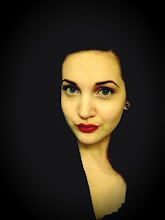“Children believe what we tell them, they have complete faith in us. They believe that a rose plucked from a garden can bring drama to a family. They believe that the hands of a human beast will smoke when he slays a victim, and that this beast will be ashamed when confronted by a young girl.
They believe a thousand other simple things. . .”
 45 years before Disney's adaptation of "Beauty and the Beast", Jean Cocteau- poet, playwright, sculptor, surrealist- adapted Jeanne-Marie Leprince de Beaumont's famous story in a far more magical and visually stunning way. Cocteau dazzles us with dreamlike imagery, scenes that could easily stand alone as paintings, and potent sexual imagery that is left open to psychological (and psychosexual) interpretation. Cocteau desired "to make the Beast so human, so sympathetic, so superior to men, that his transformation into Prince Charming would come as a terrible blow to Beauty." and he succeeded. Not only does Belle react to his transformation with less than fawning delight, but the audience is left missing their Beast as well.
45 years before Disney's adaptation of "Beauty and the Beast", Jean Cocteau- poet, playwright, sculptor, surrealist- adapted Jeanne-Marie Leprince de Beaumont's famous story in a far more magical and visually stunning way. Cocteau dazzles us with dreamlike imagery, scenes that could easily stand alone as paintings, and potent sexual imagery that is left open to psychological (and psychosexual) interpretation. Cocteau desired "to make the Beast so human, so sympathetic, so superior to men, that his transformation into Prince Charming would come as a terrible blow to Beauty." and he succeeded. Not only does Belle react to his transformation with less than fawning delight, but the audience is left missing their Beast as well.
Henri Alekan's beautiful camerawork compliments the fairytale special effects of the castle in such a stunning way. Simple camera tricks like smoking hands, jewelry turning into snake-like roots, and Belle gliding down the castle hallways in an entrancingly beautiful and ghostly fashion, paired with living furniture- arms holding up the chandeliers on the walls, faces in the fireplace and architecture of the castle- make the film feel stunningly fantastical and brings Cocteau's poetic vision to life. Since there isn't enough that I can say to do justice to this work of visual enchantment, I will leave you with a collection of images and a clip to entice you to see this for yourself.











No comments:
Post a Comment